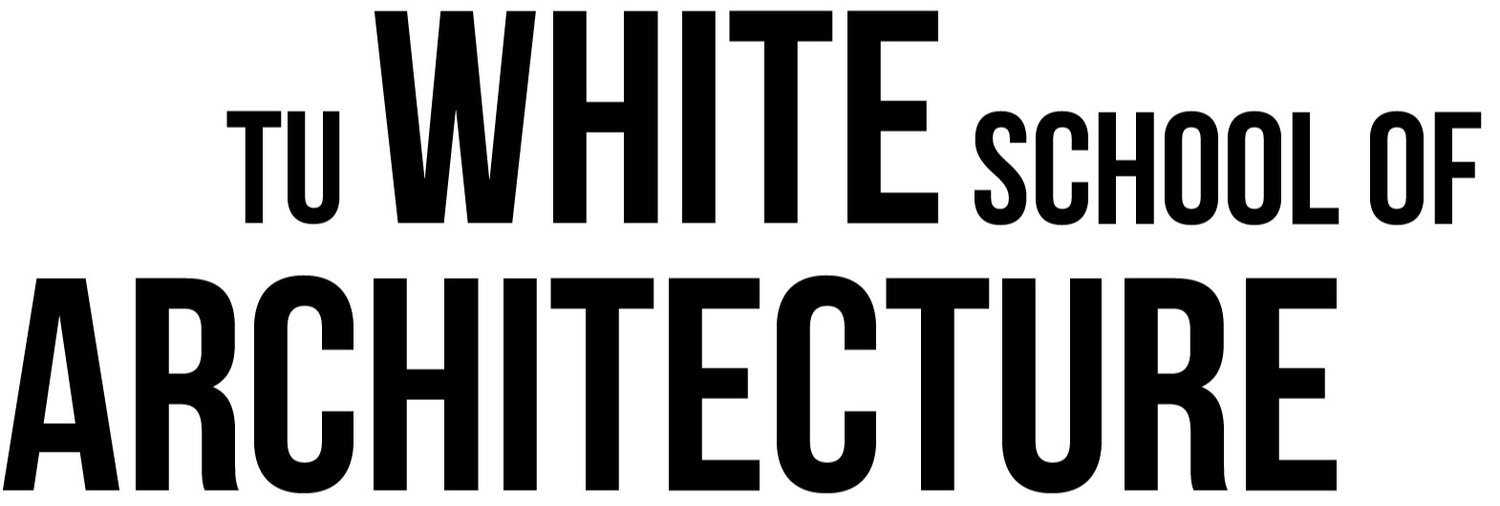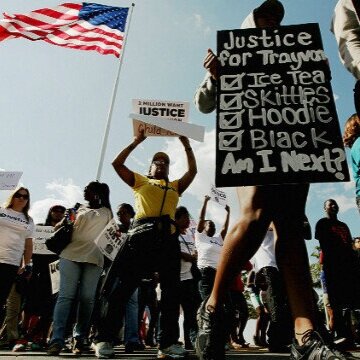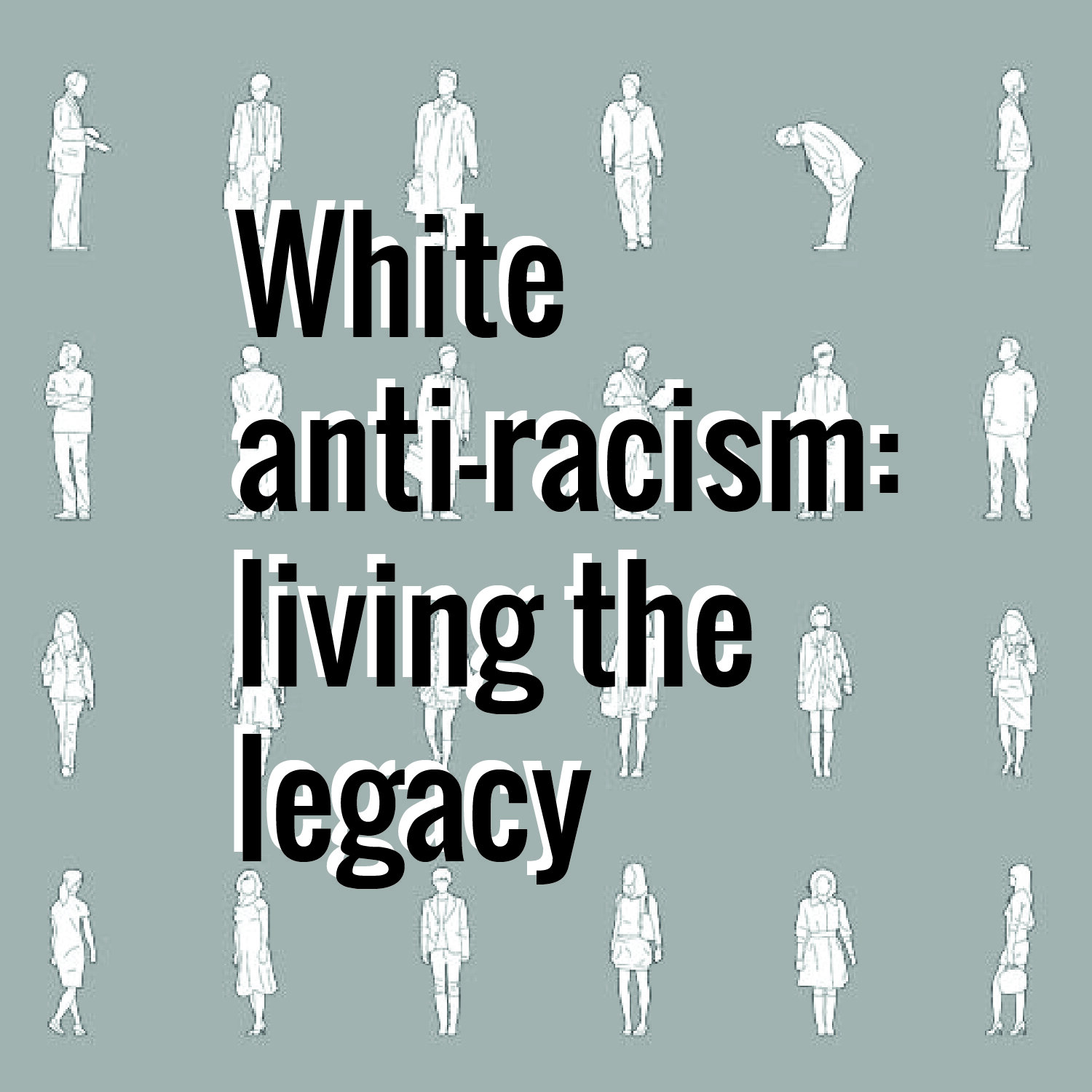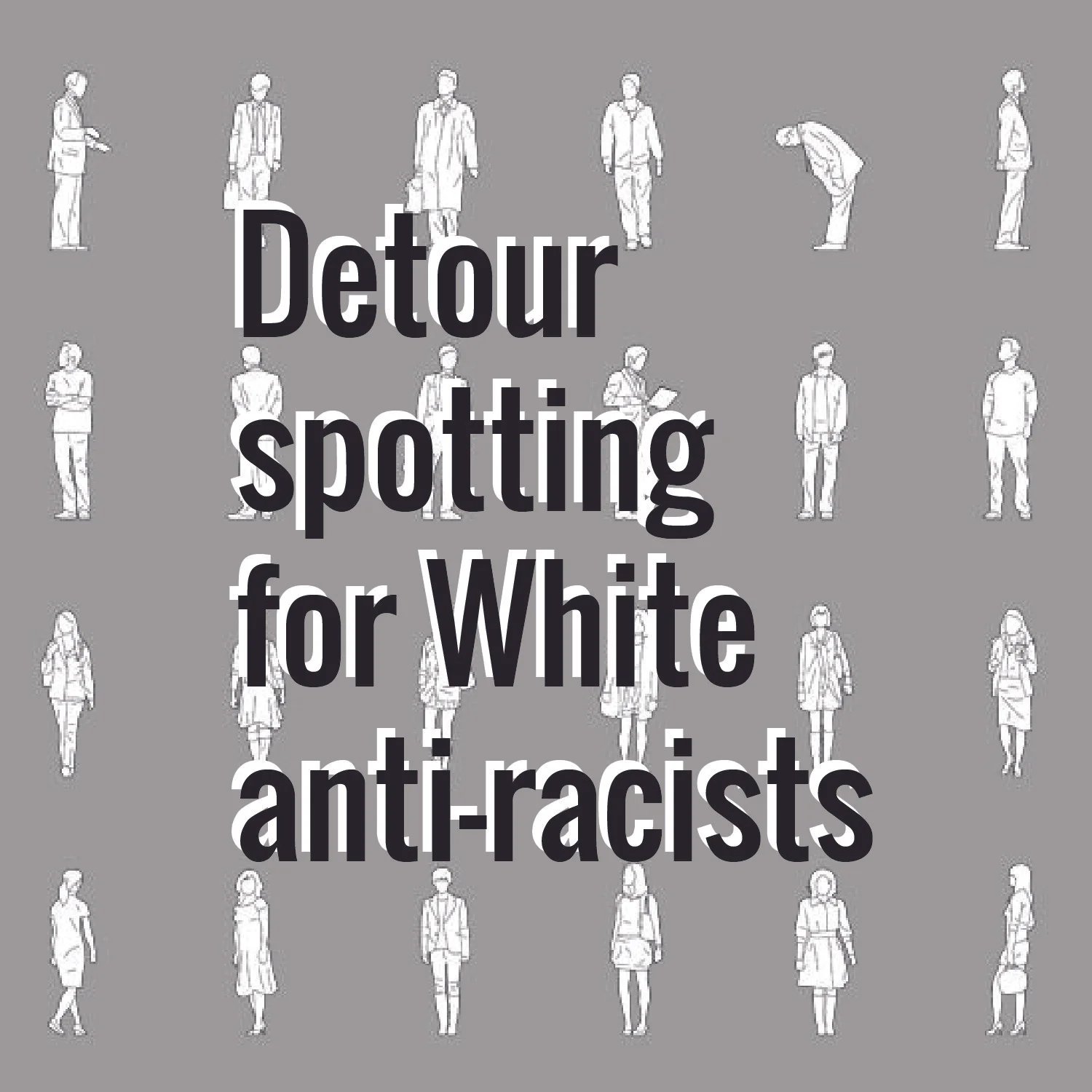Resource Guides
We draw on a long list of resources produced by designers, educators, writers, theorists, artists and activists, some of which are thematically grouped and summarized here. Click on the links below to see each resource guide.
Rather than an encyclopedic collection, these guides represent a curated selection of works. We hope you’ll find these useful in your education, and expand upon them.
Whiteness, racism and design
Image: CNN
Architecture, urbanism and Trayvon Martin
Urban designer and architect V. Mitch McEwen responded to the murder of Trayvon Martin in February 2012 with a call to action directed at architects and designers, seeing the event as “a lever in American history, like the death of Emmitt Till.” Read her essay here.
Whiteness and American architecture
Organized by University at Buffalo professor Charles Davis II, the Whiteness and American Architecture Symposium explored “a critical history of the white cultural nationalisms that have proliferated under the rubric of “American Architecture” during the long nineteenth century.” It was an outgrowth of the Race + Modern Architecture Project led by Prof. Davis, Irene Cheng, and Dr. Mabel O. Wilson. Read more here.
Racism, capitalism and the American home
Journalist Manisha Clare considers the Better Homes for America program, sponsored by the U.S. Department of Commerce and a prominent women’s magazine in the 1920s, as an expression of Jim Crow-era anti-Blackness that influenced the design of the ‘American home’ as a White, patriarchal space, and ‘protected’ against the ‘threat’ of economic redistribution. Read here.
Daniel Burnham’s White [Supremacist] city
Classics scholar Rebecca Futo Kennedy exposes how the architecture and urban planning of the City Beautiful movement, popularized at the 1893 World’s Columbian Exposition in Chicago, supported the racist, imperialist project of White American nation-building - laying the foundations for an ‘indelible bond’ between classical aesthetics and White supremacy. Read here.
Historic and present practices of exclusion
Architectural historian Dr. Mabel O. Wilson writes on her experiences navigating Whiteness and violent White supremacist domination within architectural space under the legal regime of the United States, drawing on Claudia Rankine’s poetry and the arrest of Rashon Nelson and Donte Robinson in a Philadelphia Starbucks. Read her piece at E-Flux Architecture.
Image: LOG magazine
Le Corbusier in Harlem
Inspired by ‘Playing in the Dark: Whiteness and the Literary Imagination’, Toni Morrison’s classic work of literary theory examining the ‘Africanist presence’ in White American literature, Dr. Wilson examines how racist tropes of American Blackness influenced Charles Jeanneret (Le Corbusier)’s architectural theory and practice, embedding anti-Blackness into the language of Modernism. Download here.
Underrepresentation, by the numbers
Virginia architect Katherine Williams works with the keepers of the Directory of African-American Architects to analyze and interpret data on licensure of Black architects each year. Her most recent report indicates a steep decline in licensures in 2019. Read here.
Race and modern architecture
Scholars and educators Adrienne Brown, Mark Crinson, Dianne Harris and Sadiya Hartman and Race+Modern Architecture Project conveners Dr. Mabel O. Wilson, Irene Chang and Charles Davis II are featured in this wide-ranging and accessible roundtable discussion on race, racism and architecture, past and present. Read a write-up and watch a recording at here from The Funambulist.
Image: Boulder Daily Camera
Colorblind racism in architecture
Architectural educator Shawhin Roudbari, student Ana Damari Colon Quinones and designer Ann Dang question whether any space can be ‘netural’ or colorblind. Read about their exhibit here, and check out Dissent by Design, Roudbari’s collaborative study with fellow educators Joris Gjata and Matthew Rowe.
Image: Ana Maria Leon
Collaborative reading lists on race, gender and the body
Design educator Ana Maria Leon writes on the processes for collaborative teaching and learning which have guided her in her efforts to construct syllabi for space and race in response to the Charlottesville terrorist attack, space and gender in response to the #MeToo movement, and space and the body, in response to the COVID-19 pandemic.
Image: Ujijji Davis
Developing and erasing Black landscapes
Landscape architect Ujijji Davis considers ‘The Bottom’ as a typology of Black space in American cities, how these spaces arise, and their unique vulnerability to White supremacist violence in the form of planning and design practice. Read her essay in the Avery Review here.
Image: Fast Company
Racial inequality by [urban] design
Journalist Diana Budds examines how cities in the United States have been shaped by anti-Blackness across scales from small to large, featuring the perspectives of urbanists and educators including Justin Garrett Moore and Isis Ferguson. Read her excellent and accessibly written article for Fast Company.
Critical Whiteness and White Antiracist Practice
Image: The Whiteness Project
The Whiteness Project
Filmmaker Whitney Dow’s interactive project asks White Americans how we experience our race. These short video interviews can help White people see ourselves and our unquestioned beliefs more critically, a necessary early step toward antiracist action. Check out the project here, and read a review here.
Image: Ibram X. Kendi
How to be an antiracist
Educator and author Dr. Ibram Kendi’s books, including How to Be an Antiracist and Stamped from the Beginning: The Definitive History of Racist Ideas in America are great, highly readable resources for understanding dense histories of anti-Blackness, misogyny, homophobia and capitalist oppression. Buy them from your local Black-owned bookstore, and not Amazon.
A conversation on White anti-racism
What does "white anti-racist" mean? How can guilt get in the way of antiracist practice? Where did the idea of “colorblindness” come from, and why is it dangerous? This Q&A from Teaching Tolerance, intended for older students and adults, defines and examines nuances of White anti-racism. Click here to read.
Detour-spotting for White antiracists
joan olsson’s essay spotlights a series of ‘detours’, attitudes or behaviors that signal a detour or wrong turn into white guilt, denial or defensiveness; reality checks, to clarify the underlying meaning and consequence of the behavior; and their consequences. Download here.
Image: Jim Crow Museum of Racist Memorabilia
Confronting racist visual culture
The Jim Crow Museum of Racist Memorabilia at Ferris State University, founded by Dr. David Pilgrim, is an excellent online resource educating on racist tropes in American visual and popular culture. Check out ‘The Museum’ tabs to learn more about specific caricatures and exhibits, many of which are so common as to go unrecognized by White people not educated to see them. Visit the Museum online here.
White patriarchy and higher education
Image: B.D. Wortham-Galvin and Jackie McFarland
Documenting an enduring resistance to Blackness
B.D. Wortham-Galvin and Jackie McFarland examine the “natural ideology of Whiteness at the core of architectural education”, consider the architectural implications of Whiteness and Blackness, and discuss how American architectural schools can begin to address systemic anti-Blackness. Download their paper here. (It’s got great diagrams!)
Image: Michele Mitchell
Black women’s experiences at PWIs
Education scholar Michele Mitchell creates a theoretical framework for understanding Black women students’ experiences at predominantly White institutions of higher education (PWIs). Her interviews with students vividly illustrate systemic injustices requiring attention and corrective action from White leaders of these institutions. Download her article here.
Sex, Stars and Studio
Architectural educators Sherry Ahrentzen and Kathryn Anthony consider educational practices in architecture through the lens of educational theory, focusing on how race and gender shape student experiences of critiques, juries, and ‘studio culture’. Download their article here.
Image: High Country News
Land Grab Universities
Journalists Robert Lee and Tristan Ahtone’s reporting and data visualizations for High Country News examines how the Morrill Land Grant Act of 1862 has constructed the wealth of American universities on the foundation of expropriated Indigenous land. Check out their project here.
Image: Higher Ed Today
A consortium of universities studying slavery
Universities Studying Slavery (USS) focuses study of enslavement and higher education in the United States and across the Atlantic world. Participating institutions work together as they address both historical and contemporary issues dealing with race and inequality in higher education and in university communities as well as the complicated legacies of slavery in modern American society. Read more here.
Image: ACSA
Diversity resources for architectural educators
Compiled by the Association of Collegiate Schools of Architecture (ACSA)’s Director of Research and Information, Kendall Nicholson, this collection of reports, visualizations, award winners and more is a resource for institutions seeking to better support their students. Check it out here.
Image: Architectural Record
Envisioning a diverse future for architectural education
Architectural educators Kathryn Anthony and Linda Groat survey architectural students at different types of universities - including public, private, predominantly White and historically Black schools - to assess students’ values and visions for architectural education. They find a desire for change in pedagogy, process and product. Download their article here.
Whiteness, patriarchy and public space
Image: Vox Media
The sociology of White space
Sociologist Elijah Anderson explains the psychology and history behind White vigilante policing of Black people in American public spaces, also known as ‘living while Black’. Architects, designers and planners should consider how ideas like the ‘iconic ghetto’ shape our professional practice. Read his article for Vox here.
Image: Voice of Orange County
Women, race and fear in public space
Urban design researcher and educator Kristen Day examines the experiences of women in parks and other spaces, including how those experiences are shaped by race and class. This article focuses on public spaces in suburban Orange County, California. Download it here.
Image: LitHub
Walking while Black
Writer and educator Garnette Cadogan illustrates his experiences in urban space in Kingston, Jamaica; New Orleans; and New York City, beautifully describing the transcendent highs and demeaning lows of his urban pedestrian experiences as a Black man. Read his article at LitHub.
Image: Project for Public Spaces
Seeing racialized public spaces
KangJae ‘Jerry’ Lee writes about his research into the histories and user experiences of public parks, which reveals how decision-making, design, programming, and management can make public spaces into "white spaces”. Read his article for the Project for Public Spaces here.
Image: Essence magazine
Making space for Black women’s safety
Author and placemaker Jay Pitter considers steps urban designers and policymakers can take to make cities safe for Black women, including trans women and femmes, considering how gender shapes our use and perceptions of public space. Read her article for Essence magazine here.
Image: Slate
Seen as a problem, or not seen at all
This conversation features writers and journalists Tressie McMillan Cottom, Jamelle Bouie, Gene Demby and Aisha Harris, who discuss the hypervisibility and invisibility, disrespect and danger they feel as Black women and men in public spaces designed and curated for White people’s experiences. Read it here at Slate.
Homophobia, transphobia and queer urbanism
Image: University of Minnesota Press
Masculinities across the map
Dr. Miriam J. Abelson chronicles expressions of masculinity among American men, with a focus on trans men. Her research significantly considers how place and race, including urban and rural, Black and White contexts, affect identity and how masculine people choose to express their identities. Listen to an interview with Dr. Abelson here.
Image: Stalled!
Safe, sustainable and inclusive restrooms
A collaboration between architect Joel Sanders and trans historian Susan Stryker, Stalled! addresses the need for to create safe, sustainable and inclusive public restrooms for everyone regardless of age, gender, race, religion and disability. Check out the project here.
Image: Vancouver Courier
Structural violence against sex workers
Researchers Tara Lyons, Andrea Krüsi, Leslie Pierre, Will Small and Kate Shannon examine how, within a criminalized context, construction and gentrification enhance vulnerabilities to violence and harassment from police and residents for trans sex workers. Read their article here.
Image: FIERCE NYC
Queer design and planning
Architect, educator and community activist Kian Goh expands ‘queer space’, a concept first defined by Aaron Betsky, to consider spaces occupied by a broader range of queer people than White gay men - specifically, the queer youth of color organized in FIERCE NYC, an organization fighting to preserve its members’ right to space in historically queer New York City neighborhoods. Read her piece here.
Image: Charles Davis II
June Jordan, utopian architect
Architectural educator Charles Davis II amplifies Alexis Pauline Gumbs’ claim that Black queer feminist poet and author June Jordan was an architect. Davis visualizes urban design principles in Jordan’s novel His Own Where, as a means of reclaiming her relationship to modernist architecture and urban design. Download his article here and check out Annette Koh’s blog post on the subject here.
Antiracist, Feminist Design Education and Practice
Image: The New School
bell hooks on architecture
Cultural critic and educator bell hooks has written extensively on love, feminism, race, masculinity, spacemaking, placemaking and architecture as a cultural practice. Three great essays to download: Homeplace (a site of resistance), Black Vernacular: Architecture as Cultural Practice, and Choosing the Margin as a Space of Radical Openness.
Image: Annette Koh
Placemaking when Black lives matter
Annette Koh speculates on what placemaking would look like if Black lives mattered, illuminating the ways policing, racial profiling, racialized and classed assumptions about what activities are “legitimate” shape planning and urban design practice. Read her essay here.
Image: Aggregate: Black Lives Matter
Black Lives Matter and architecture
A digital magazine organized by architectural educators Meredith TenHoor and Jonathan Massey, published in response to the Ferguson uprising and emergent Black Lives Matter movement at the end of 2014, to “put Black lives at the center of our thinking about architecture and its history.” Check out the essays here.
Image: MIT Press
Design justice as community-led practice
Educator and organizer Sasha Costanza-Chock explores how design might be led by marginalized communities, dismantle structural inequality, advance collective liberation and ecological survival. Download their (14 page) paper here and check out their book from MIT Press here.
Image: Gordon Parks Foundation
Black Landscapes Matter
Landscape architect and educator Kofi Boone considers how, paraphrasing Jelani Cobb, ‘doing harm to Black landscapes is doing harm to everyone’s.’ Boone reframes landscape architecture histories and Black histories to see their intersections, and proposes strategies for his profession’s transformation. Read here.
Image: Columbia GSAPP
When ivory towers were Black
Dr. Sharon Egretta Sutton, longtime educator and advocate for social justice in and through design and planning, thrillingly chronicles the Black Power era in the halls of Columbia University. Her book provides crucial lessons for activists seeking to change education and the professions. Listen to Dr. Sutton’s book launch event and buy her book here.
Image: CityLab
A syllabus on race and justice
This compilation by Harvard Graduate School of Design (GSD) students of necessary readings on race, racism, architecture, urban design and planning was produced as the GSD’s African American Student Union (AASU) conceptualized the first Black in Design conference in 2015. Read their syllabus here.
Image: GSD AASU
GSD AASU Black in Design
An interdisciplinary conference with predominantly Black speakers focused on art, culture, justice, tech, activism and more, hosted biannually by the Harvard Graduate School of Design African American Student Union (GSD AASU) in Cambridge, MA since 2015. Each conference is available in its entirety on YouTube here: 2015, 2017, 2019.










































